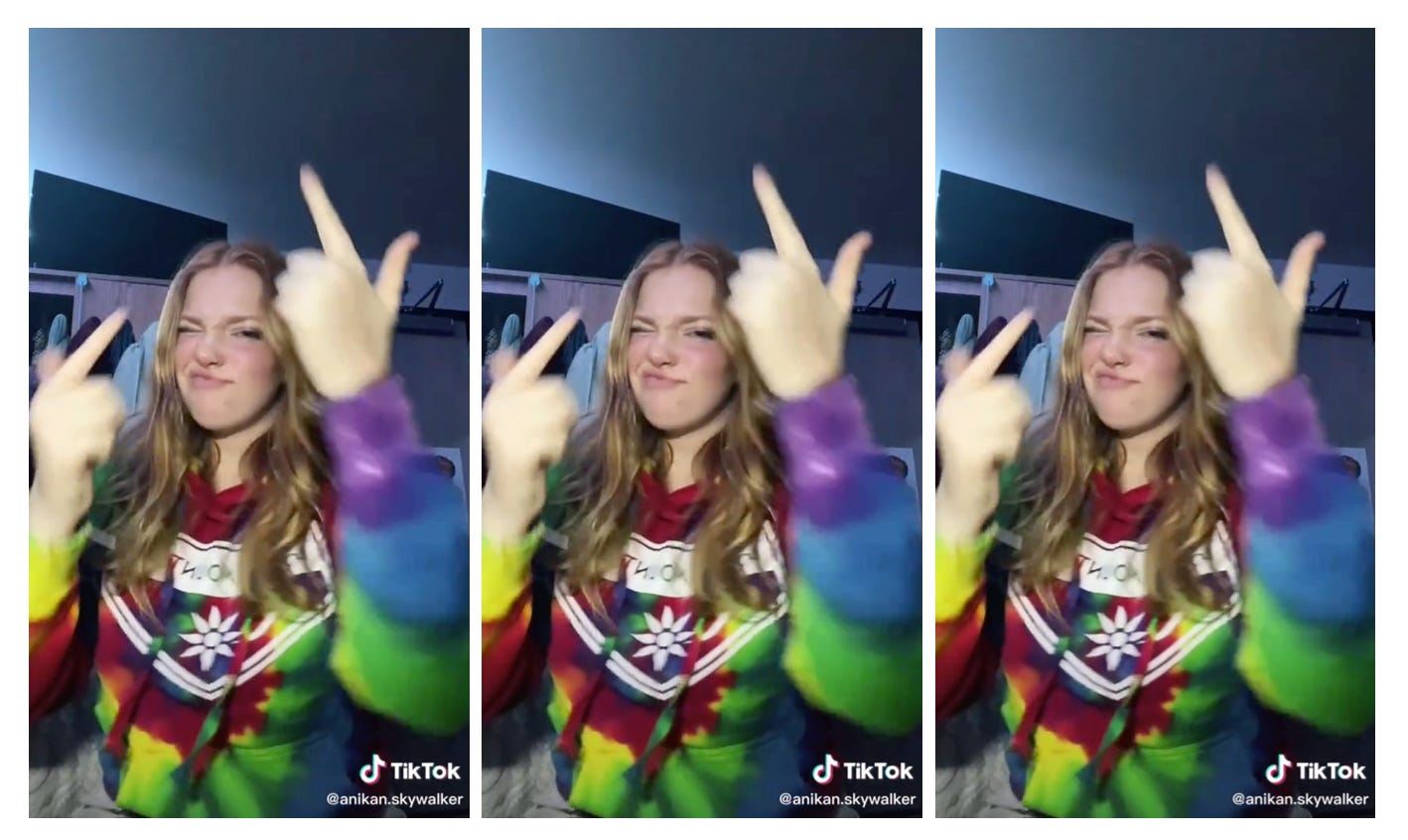Hi subscriber,
this is Understanding TikTok your weekly infusion 💉 of TikTok related news. My name is Marcus. I am currently finishing a study on political activism on TikTok together with Chris Köver. This week we talk about:
👜 Front Row Fashion
💶 Get paid to make TikToks
✂️ Mis- and Disinformation
👜 Front Row Fashion
This week was Haute Couture week, writes Vogue (January 31) and points to creators posting their best front-row-worthy fits, “as though they were at the shows”. Sign O' The Times. Check the article for a bunch of examples.
The relationship between TikTok and luxury fashion brands has not been easy. A lot of brands do not seem to feel particularly confident on the platform ten years after the Instagram shift. Many struggle to understand the peculiarities around here and are not ready for embracing imperfection. Read more on that if you happen to understand german in a good article by Anne Feldkamp for Standard.
I have covered fashion in newsletter 1 (Wisdom Kaye), 12 (TikTok fashion month, September 2020) and 23 (Celine vs. Gucii). This week i studied Louis Vuitton on TikTok. The account started in September 2020. It is not posting regularly, only when there is a new collection.
It is nice to see how the style of filming and the techniques used get better. While the very first video seems rather pointless (A male model putting on some sci fi sunglasses) the #LVSS21 a month later was obviously heavily influenced by green screen technology and the art of layering. It has a nice claustrophobic puppeteer feel.
The latest production #LVMenFW21 from last week plays with fragmentation and has an airy collage style that feels very playful and easy. Someone in the team has probably seen videos by Kelli Ann Erdmann like this one and has “high-fashioned” them.
Nevertheless the behind the scenes shots and the improvised defilee in the studio still feel very stiff, corporate (someone is commanding “keep walking, keep walking”) and lack any kind of required TikTok realness.
If you want to compare the LV-performance, here is Fendi and here is Stella McCartney. And if you happen to be a Vogue Business member (currently there is a discount $154 p.a.), there will be a Vogue Business and TikTok Technology Forum on March 18.
💶 Get paid to make TikToks
Katie Way has written a really good piece for Vice: Here’s How Much Money Normal TikTok Users Really Make From the Creator Fund. Short answer: Not very much. “I think I make like… two cents a day, on average, ” says user Anika (30.8K 2.2MLikes). That sounds a bit different compared to sensational headlines like TikTok’s 7 Highest-Earning Stars Led By Teen Queens or Snapchat paying millions.
None of the creators VICE spoke to had a firm understanding on how views, likes, and interactions translated into the money they receive for their content. And there was no elaboration on how much different factors are weighted. Way concludes: “the Creator Fund’s sheer existence has created an echo chamber around its viability that is completely detached from the eventual, pretty paltry results.”
Meanwhile creators turn to crowd-sourcing or may start producing TikTok videos for startups to keep or earn the status of being a small part of an eventually emerging creator middle class.
Or they “have already been altering their posting behaviours, pushing more aggressively in their ownership practices, experimenting more with their algorithmic practices, employing more parasocial strategies to win over engagements in their interactive practices, and borrowing from the established strategies of legacy practices to find their footing,” writes Crystal Abidin in a new academic paper.
Abidin, C., 2021. Mapping Internet Celebrity on TikTok: Exploring Attention Economies and Visibility Labours. Cultural Science Journal, 12(1), pp.77–103. DOI: http://doi.org/10.5334/csci.140
✂️ Mis- and Disinformation
TikTok is tackling the scourge of mis- and disinformation by launching a new feature that highlights the uncertainty of unverified content, aiming to slow its spread across the app, writes Chris Stokel-Walker on dexerto.com.
In a press release TikTok writes: “We remove misinformation as we identify it, and in the UK we now partner with Logically, a technology company with one of the world’s largest dedicated fact-checking teams, who are supporting our efforts to determine whether content shared on the platform is false, misleading or misinformation. If fact checks confirm content to be false, we'll remove the video from our platform.”
Interestingly enough, TikTok’s press release mentions mis- but avoids to mention disinformation. Even though there has been some good reporting by Coda about TikTok sees a surge in anti-protest disinformation in Russia. Here is a twitter thread with examples.
Let´s clarify the difference between mis- and disinformation. Mis-information: Information that is false, but not created with the intention of causing harm. Dis-information: Information that is false and deliberately created to harm a person, social group, organization or country (Source).
Either way - Stokel-Walker quotes Yevgeniy Golovchenko, who studies disinformation at the University of Copenhagen: “By labelling some content, a social media platform can potentially make other non-labelled content – both false and true – appear more reliable.” 🧐
This is the end. You want more? Here is an academic paper on Playing Politics & TikTok. Here is the official TikTok Creator Podcast. And Miley’s Super Bowl Pre-Show Prep is on sunday. Take care.
Ciao,
Marcus








